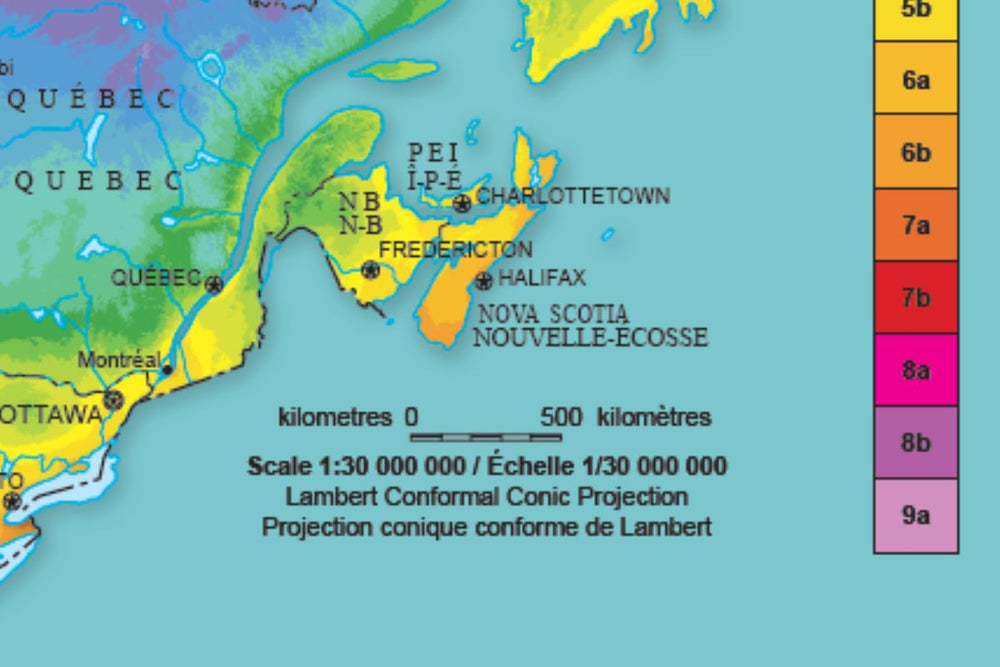Image from Natural Resources Canada
Characteristics of Prince Edward Island Planting Region
Prince Edward Island has a temperate maritime climate, with moderate summers and cold but not extreme winters. Thanks to the surrounding ocean, the province experiences less variation in temperature compared to inland regions. The proximity to water also helps extend the frost-free period in coastal areas.
PEI is famously fertile, with rich red soil that’s high in iron oxide—ideal for agriculture. The island’s growing season typically runs from late May to early October, offering gardeners and farmers about 120 to 140 frost-free days per year.
Despite its small size, PEI’s growing conditions can vary slightly between coastal and inland areas, so it's always a good idea to consult local resources for precise planting dates.

Challenges of Growing in Prince Edward Island
1. Unpredictable Weather Patterns
PEI’s maritime climate can bring sudden weather changes. Coastal winds, unexpected frosts, and heavy rains can disrupt planting and harvesting schedules.
2. High Humidity and Pests
The island's humidity can make crops more susceptible to fungal diseases and increase the presence of pests such as slugs, aphids, and wireworms.

The Benefits of Using a Greenhouse in Prince Edward Island
While PEI’s outdoor growing season is relatively generous by Canadian standards, using a greenhouse can help stabilize your growing environment, allowing for more consistent harvests and an expanded range of crops.
1. Extend your Growing Season
-
Without a Greenhouse:
Most outdoor crops are limited to a 4–5-month window due to the risk of frost.
-
With a Greenhouse:
You can add an extra 2–4 months to your season, especially helpful for heat-loving plants and early starts.
PEI’s long daylight hours in summer and relatively mild springs and falls make it ideal for greenhouse growing.

Greenhouse from a customer in Prince Edward Island
2. Grow a Wider Variety of Vegetables Without a Greenhouse:
These hardy crops typically do well outdoors on the Island:
|
Turnips Swiss Chard Spinach Radishes |
Lettuce Kale Beets Peas |
With a Greenhouse:
A protected space opens the door to more delicate or heat-loving vegetables, such as:
Recommended vegetables for greenhouse growing include:
|
Broccoli Brussel sprouts Cabbage Cauliflower Cucumbers Onions Leeks |
Bell Peppers Pumpkins Gourds Squash Zucchini Tomatoes Watermelon |
Cantaloupe Herbs Sweet Corn Eggplant Potatoes Carrots |


